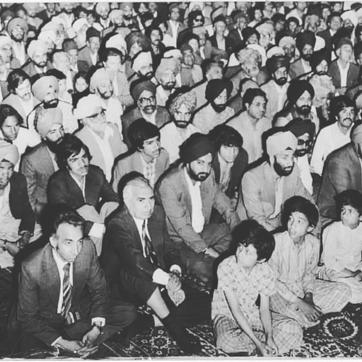Review: Afghan Hindus and Sikhs by Inderjeet Singh
Inderjeet Singh’s book aims to prove that Afghan Hindus and Sikhs are an indigenous people and not recent settlers

Can a Hindu or a Sikh be a real Afghan? Or could it be possible that people left their homes in India to settle in a country where they would always lead challenging lives because of their religion?
This book is a systematic and earnest compiling of a wide range of information about the origin of this once strong and mainstream, but over the last few decades blighted, community. It is clearly structured and written in simple language. An earnest and poignant plea for recognition, it aims to prove once and for all that Afghan Hindus and Sikhs are an indigenous people and not recent settlers.
A superficial and prejudiced understanding denies native origin to Afghan Sikhs and Hindus by claiming that they were brought to Afghanistan as slaves by Mahmud Ghaznavi in the 11th century, or later when they fled Babur’s territory in the 13th century – or even to the influx of Sikh and Hindu traders in the 17th, 18th and 19th centuries. Inderjeet Singh disputes this with a large number of written records, starting from the rule of Kabul by the Hindu Shahi kings which ended in the 10th century, all the way to the present. From his citing of these, the reader learns that Hindus worked in responsible positions under the Ghaznavi rulers in the 11th and 12th centuries, serving as physicians, important court officials, and even army generals. He exposes a trite understanding of history by underlining that Genghis Khan’s 75-year rule was the rule of an infidel: his name was Khan but he was not a Muslim. In fact, his was a period that introduced unfamiliar religious traditions along with non-Sharia taxation, non-Muslim personnel in high office and a liberal approach to all religious practice which reduced the status of Islam in the area. The book also has descriptions of Hindus during Timur’s 35-year rule. Then, in the 16th century, the Sikh religion emerged and spread as Guru Nanak travelled and preached, and the community developed in the area. Through the 17th and 18th centuries, the migrations continued, supplementing the indigenous population. Lifestyles are seen through the eyes of the many travellers across this region. Inderjeet Singh also documents the gurudwaras of Afghanistan, providing important historical information and their present depleted condition. Some have proof of antiquity with dates on handwritten copies of the Guru Granth Sahib.

Through the 19th and 20th centuries, as the beautiful landlocked country developed into a battlefield of international intrigue, the Hindu-Sikh community became a victim of internal as well as external attacks – denied of the freedom to eat, drink and perform their religious rituals; facing violent processions when they tried to cremate their dead; their real estate in peril; their children mocked in school and told to go ‘home’.

This book is largely a clean read with little slips that a sharper proofreading eye could have caught. To extend the whines, I could also point out that it did not give me a sense of the difference between Afghan Hindus and Afghan Sikhs. I asked Inderjeet, and he said that in a way Afghan Hindus are similar to Sindhi Hindus. (Most Sindhi Hindus observe the tenets of Sikhism, their prayers are largely from the Guru Granth Sahib and their ceremonies at the gurudwara. However, mainstream Sikhs generally disapprove of their easy affinity with Hindu ways; neither do they classify themselves as Sikh.) Inderjeet specified that Hindu places of worship in Afghanistan do not keep Guru Granth Sahib; that Hindu and Sikh attend each other functions; that their numbers are approximately 2:3.
Read more: Review: Ladders Against The Sky by Murli Melwani
On 22 June 2019, when India played against Afghanistan in the World Cup Cricket match at Southampton, the stadium was packed with fans cheering loudly for India (and against Pakistan, not Afghanistan). There were Afghan fans too, and I was intrigued to see one box of Sikhs with flags of both countries. I messaged Inderjeet Singh asking if he was in the stadium. Silly question. He replied confirming that they must be Afghan Sikhs, of whom there were 10,000 in London. And 20,000 in Delhi – in contrast to just 8000 in Peshawar today, depleted to half over five years by kidnapping, extortion, and the murder of prominent Sikhs, which caused many to flee their homeland.
Saaz Aggarwal is the author of The Amils of Sindh; A Narrative History of a Remarkable Community



